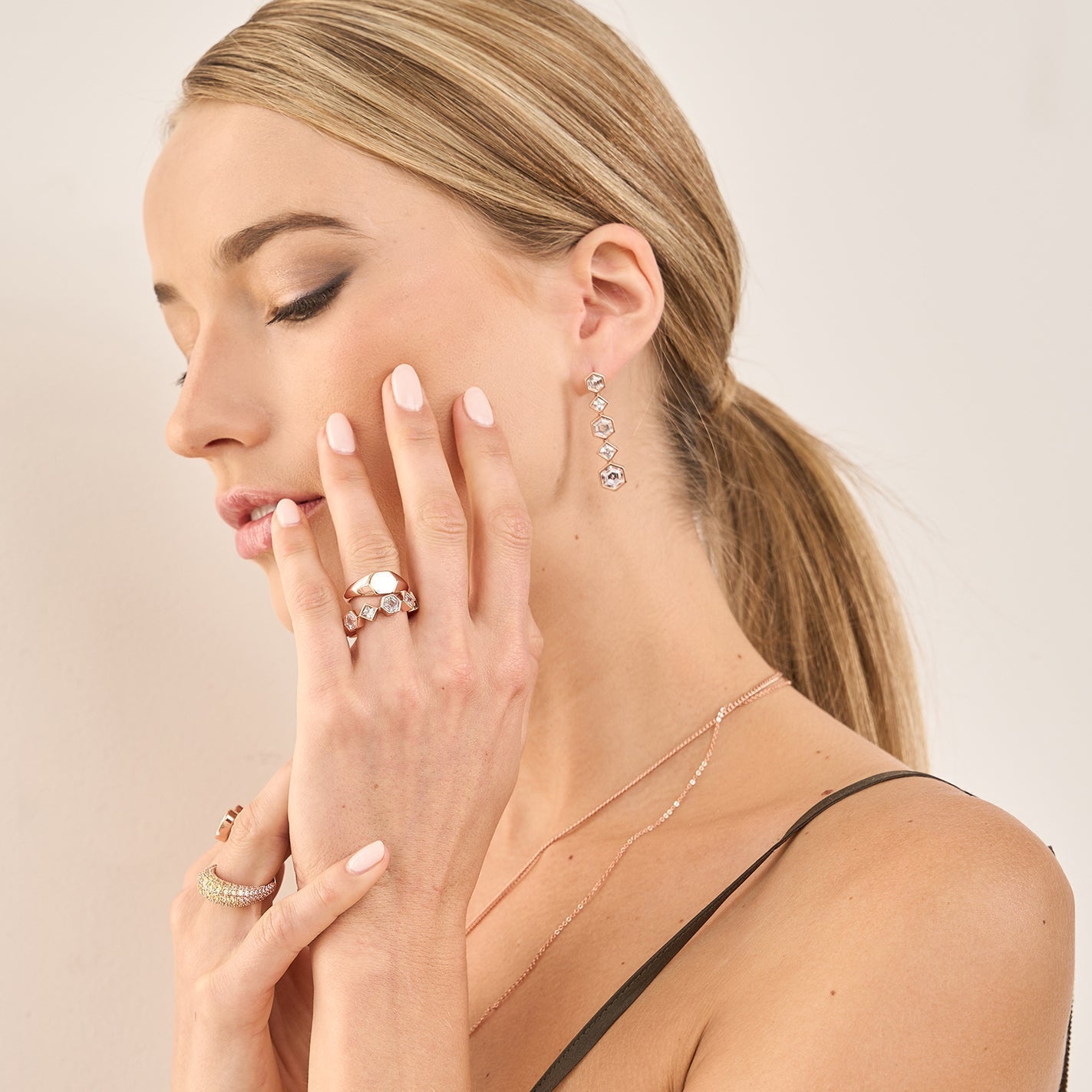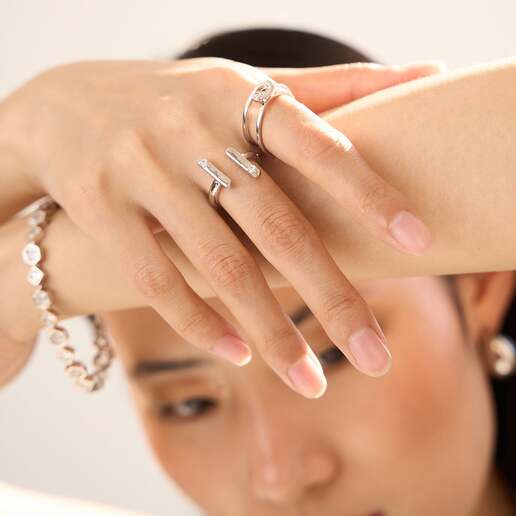A: The first type of gold jewelry finish we will discuss is gold flash-plated jewelry, which features an extremely thin layer of real gold—typically less than 0.175 microns thick—applied over a more affordable base metal like brass, copper, or nickel. This shimmering gold layer is achieved through an electroplating process, where a small amount of real gold is deposited onto the surface through electrocurrents, giving the piece its shiny, gold-like appearance.
Known for its inexpensive price tag and ability to mimic the look of solid gold, gold flash-plated jewelry is a popular choice for trendy, budget-friendly accessories. However, due to the ultra-thin gold layer, gold flash plated jewelry is less durable than other types of gold finishes, such as standard gold plating, gold vermeil, or gold-filled. With frequent wear, this thin gold layer can wear off over time, revealing the less expensive base metal beneath. For this reason, gold flash-plated jewelry is often used in costume pieces or smaller, inconspicuous components like clasps, connectors, or decorative accents.
Like regular gold-plated jewelry, gold flash-plated pieces require careful maintenance to preserve their shine and extend their overall lifespan. Following proper care and cleaning guidelines is essential for keeping these pieces looking their best.
1. Avoid harsh chemicals: Steer clear of exposing your gold flash-plated jewelry to harsh chemicals commonly found in common household cleaning products, such as chlorine, ammonia, or bleach, as these harsh substances can weaken and dull the bright gold layer, leading to discoloration over time. Additionally, try to avoid contact with personal care products like perfumes, hairsprays, and lotions, as these can cause the plating to deteriorate more quickly.
2. Gentle jewelry cleaning: To maintain the radiant finish of your gold flash-plated jewelry, use a soft, lint-free cloth or a specialized mild jewelry cleaner designed for delicate gold items. Gently polish the surface of your gold flash-plated jewelry to remove dirt, oils, and residue, ensuring you handle each piece with care to avoid any unnecessary pressure that could cause scratches or damage to the plating.
3. Store properly: When not in use, store your gold flash-plated jewelry in a protective environment, such as a soft fabric pouch, a fabric-lined jewelry box, or an anti-tarnish bag. These storage options prevent exposure to moisture, air, UV light, and other harsh elements that may accelerate tarnishing. For added protection, make sure to separate your jewelry pieces to avoid them rubbing against each other, causing scratches, which accelerate the oxidation process.
4. Remove before rough activities: To prolong the life of your gold flash-plated jewelry, always remove each piece before participating in rigorous activities that may cause wear or damage. These activities include swimming in chlorinated pools, bathing or showering, exercising, or engaging in household chores involving water or cleaning agents. Gold flash plating is delicate and the thin outer layer can wear away quickly with frequent exposure to moisture or abrasion.





